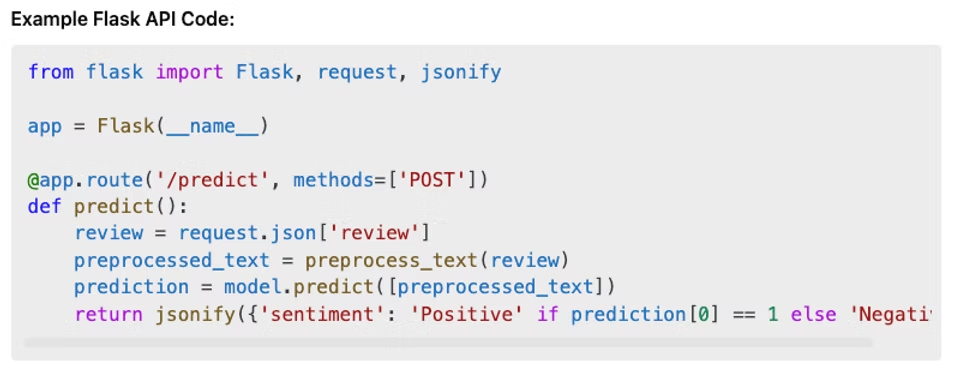Introduction
For many software engineers pursuing roles in machine learning (ML), the thought of behavioral interviews can feel like navigating uncharted territory. Unlike technical interviews, where success hinges on solving algorithmic puzzles or demonstrating knowledge of ML frameworks, behavioral interviews delve into how you think, interact, and adapt in the workplace. They’re designed to assess the human side of engineering—the skills and traits that make you a reliable, effective, and ethical team member.
At InterviewNode, we understand that behavioral interviews often feel ambiguous or even intimidating for ML engineers. But here’s the good news: with the right preparation and mindset, you can transform these interviews into a platform to showcase your unique qualities. Behavioral interviews aren’t just a formality—they’re an opportunity to connect your technical expertise with your personal values, problem-solving approach, and ability to thrive in complex, team-oriented environments.
This guide is designed to demystify the behavioral interview process, offering practical advice rooted in real-world experience. We’ll cover everything from the competencies these interviews assess to the common pitfalls to avoid. Whether you’re a recent graduate or a seasoned engineer aiming for a senior position, this resource will provide the tools you need to excel.
Ready to ace your next behavioral interview? Let’s dive in and unlock your potential.
Understanding Behavioral Interviews
What Are Behavioral Interviews?
Behavioral interviews are a type of interview designed to evaluate how candidates have approached real-world challenges in the past to predict their future behavior in similar situations. Unlike technical interviews that assess specific coding, algorithmic, or domain knowledge, behavioral interviews focus on understanding you as a professional and team member.
The underlying philosophy is simple: past behavior is often the best indicator of future performance. Companies use behavioral interviews to gauge how you think under pressure, how you collaborate with others, and how you align with their values and culture. These interviews explore aspects like problem-solving, communication, adaptability, and ethical decision-making.
For ML engineers, behavioral interviews take on an added layer of complexity. While your technical expertise is critical, your role often intersects with broader business and societal concerns, such as handling ambiguous datasets, mitigating algorithmic bias, and explaining ML concepts to non-technical stakeholders. Behavioral interviews give hiring managers a chance to assess whether you have the mindset, empathy, and communication skills to handle these challenges effectively.
Why Behavioral Interviews Are Essential for ML Engineers
Machine learning is a deeply collaborative field. As an ML engineer, you don’t operate in a silo. Your work likely involves:
-
Collaborating with data engineers to preprocess and structure datasets.
-
Partnering with product teams to define the scope and goals of ML initiatives.
-
Engaging with executives or clients to explain the impact of your models in business terms.
Behavioral interviews help companies ensure that you’re not just a technical wizard but also someone who can work well with others, adapt to changing priorities, and stay aligned with the organization’s mission.
Here are some reasons behavioral interviews are particularly important for ML engineers:
-
Interdisciplinary CollaborationMachine learning projects often require input from various teams. Your ability to communicate across disciplines—translating technical jargon into actionable insights—can make or break a project. Behavioral interviews help hiring managers understand how you navigate these interactions.
-
Addressing Ethical and Social ImpactAs an ML engineer, your work has far-reaching implications. Hiring managers want to know that you consider ethical concerns, such as bias in algorithms, privacy in data handling, and the societal impact of deploying ML solutions.
-
Dealing with AmbiguityML projects rarely come with a clear roadmap. Behavioral interviews assess how you handle ambiguity, prioritize competing demands, and make decisions when the stakes are high.
-
Cultural FitEvery company has its unique culture. Behavioral interviews help ensure that your values and working style align with the organization’s environment. For example, a startup might prioritize agility and resourcefulness, while a large tech company may focus on scalability and cross-team collaboration.
What to Expect During a Behavioral Interview
A behavioral interview for an ML engineer role typically involves questions that explore how you approach challenges, manage conflicts, and contribute to team success. For example, you might be asked:
-
“Can you tell me about a time when you disagreed with a team member on how to approach a problem?”
-
“How have you ensured fairness in your machine learning models?”
-
“Describe a situation where you had to explain a complex technical concept to a non-technical audience.”
The format may vary depending on the company, but here’s a typical structure:
-
Warm-Up QuestionsThese questions are designed to put you at ease, such as, “Can you walk me through your resume?” or “What drew you to this role?”
-
Core Behavioral QuestionsThese dive into specific experiences and competencies. Expect questions about teamwork, leadership, adaptability, and problem-solving.
-
Follow-Up and Probing QuestionsInterviewers may dig deeper by asking follow-up questions like, “What did you learn from that experience?” or “How would you approach it differently now?”
-
Closing QuestionsYou might be asked for reflections or insights, such as, “What’s the biggest lesson you’ve learned from working on ML projects?”
Why Behavioral Interviews Feel Challenging
Behavioral interviews require vulnerability. Unlike technical interviews, where there’s often a clear right or wrong answer, behavioral interviews demand introspection. You need to strike a balance between showcasing your strengths and acknowledging your growth areas. Common challenges include:
-
Overloading responses with technical jargon instead of focusing on interpersonal aspects.
-
Providing vague or generic answers that fail to highlight your unique experiences.
-
Struggling to connect past experiences with the job’s requirements.
The Opportunity in Behavioral Interviews
While they may seem daunting, behavioral interviews are a golden opportunity to differentiate yourself. They allow you to:
-
Highlight your unique experiences and achievements.
-
Showcase your soft skills alongside your technical expertise.
-
Build rapport with your interviewer by sharing authentic, relatable stories.
Remember, preparation is key. The more you practice and reflect on your past experiences, the more confident and articulate you’ll become during the interview. In the next section, we’ll dive into the specific competencies hiring managers look for and how to align your responses with their expectations.
Key Competencies Assessed
Behavioral interviews for ML engineers are designed to evaluate how well-rounded you are as a professional. While technical expertise is non-negotiable, companies want to understand how you think, interact, and adapt. Below are the core competencies typically assessed during these interviews, with insights into why they matter and how to demonstrate them effectively.
1. Problem-Solving and Analytical Thinking
Why It Matters
Machine learning projects often present ambiguous, unstructured challenges. Whether you’re dealing with incomplete datasets, unexpected model behavior, or evolving business requirements, your ability to analyze problems and craft innovative solutions is critical.
What Interviewers Look For
-
A logical, methodical approach to problem-solving.
-
Creativity in finding alternative solutions when faced with constraints.
-
Examples of handling complexity under pressure.
How to Showcase It
Prepare anecdotes that highlight your analytical thinking. For instance, share how you identified a bottleneck in a model pipeline and implemented a new preprocessing technique to enhance efficiency.
Example Question:“Can you describe a time when you solved a particularly difficult problem on a machine learning project?”
2. Communication and Collaboration
Why It Matters
Machine learning is a team sport. As an ML engineer, you’ll often collaborate with data engineers, product managers, UX designers, and executives. Clear communication ensures everyone understands the technical details and how they translate to business value.
What Interviewers Look For
-
The ability to simplify complex technical concepts for non-technical stakeholders.
-
Active listening and openness to feedback.
-
Evidence of fostering productive teamwork.
How to Showcase It
Use examples where you bridged communication gaps between teams. Perhaps you delivered a presentation explaining how an ML model impacts user behavior, or you worked closely with data engineers to debug a pipeline issue.
Example Question:“Tell me about a time when you had to explain a complex technical concept to someone without a technical background.”
3. Adaptability and Continuous Learning
Why It Matters
The ML landscape evolves rapidly, with new algorithms, frameworks, and tools emerging constantly. Employers want to know that you can adapt to change and continuously improve your skills to stay relevant.
What Interviewers Look For
-
Willingness to embrace new tools or methods.
-
A growth mindset and openness to learning from failures.
-
Examples of adapting to shifting project priorities or unforeseen challenges.
How to Showcase It
Reflect on times when you had to learn something new quickly or pivot due to changing requirements. For example, discuss how you adapted an existing model to accommodate new business constraints or adopted a new framework to enhance model efficiency.
Example Question:“Describe a situation where you had to quickly learn a new technology or methodology to complete a project.”
4. Ethical Judgment and Integrity
Why It Matters
As ML engineers, our work directly impacts users’ lives. From biases in algorithms to privacy concerns, ethical considerations are central to designing responsible AI systems. Companies want engineers who prioritize fairness, accountability, and user welfare.
What Interviewers Look For
-
Awareness of ethical challenges in ML, such as data bias and model transparency.
-
A principled approach to addressing ethical dilemmas.
-
Evidence of advocating for responsible practices.
How to Showcase It
Prepare examples where you identified and mitigated potential biases or ensured transparency in your models. Highlight your commitment to ethical engineering practices, especially if you’ve worked on high-impact projects.
Example Question:“Can you give an example of a time when you addressed ethical concerns in an ML project?”
5. Leadership and Initiative
Why It Matters
Even if you’re not in a formal leadership role, companies value engineers who take initiative, mentor peers, and contribute to team success. Leadership isn’t just about managing people—it’s about guiding efforts and driving outcomes.
What Interviewers Look For
-
Proactive problem-solving and ownership of tasks.
-
Examples of mentoring or supporting team members.
-
Contributions to improving team processes or outcomes.
How to Showcase It
Share stories of stepping up to lead a project, mentoring junior team members, or improving team workflows. For example, you might discuss how you introduced a more efficient model evaluation process that saved your team time and resources.
Example Question:“Tell me about a time when you led an initiative or took ownership of a challenging task.”
6. Teamwork and Conflict Resolution
Why It Matters
ML projects often involve multiple stakeholders with varying priorities. Employers want to see that you can navigate disagreements constructively and work harmoniously in a team environment.
What Interviewers Look For
-
Empathy and respect for diverse perspectives.
-
Effective conflict resolution skills.
-
Evidence of fostering positive team dynamics.
How to Showcase It
Think about times when you helped resolve a disagreement or collaborated with others to achieve a shared goal. Highlight your ability to listen, compromise, and maintain professionalism.
Example Question:“Describe a time when you disagreed with a team member about how to approach a problem. How did you handle it?”
Common Behavioral Questions for ML Engineers
Behavioral interviews often follow a predictable pattern, with questions designed to explore your past experiences and decision-making processes. By preparing for these questions in advance, you can provide structured, compelling responses that showcase your technical expertise, interpersonal skills, and cultural fit. Below, we’ll break down some of the most common behavioral questions for ML engineers, explain the rationale behind each, and provide strategies for answering them effectively.
1. Tell Me About a Time You Faced a Challenging Problem.
Why It’s Asked
This question evaluates your problem-solving skills and resilience. Employers want to see how you approach challenges, break them into manageable components, and persevere through obstacles.
How to Answer
-
Situation: Briefly describe the context of the problem.
-
Task: Explain your role and the stakes involved.
-
Action: Highlight the steps you took to address the issue, emphasizing your logical and innovative approach.
-
Result: Conclude with the positive outcome or what you learned from the experience.
Example Answer
“Our team was tasked with building a recommendation system for an e-commerce platform, but the dataset had significant missing values. My role was to identify a solution to handle the incomplete data. I researched multiple imputation methods and ultimately implemented a hybrid approach combining matrix factorization and user-based collaborative filtering. This reduced error rates by 25% and significantly improved model performance. The experience reinforced the importance of flexibility and methodical testing in tackling data quality issues.”
2. How Do You Handle Disagreements Within a Team?
Why It’s Asked
Conflict is inevitable in collaborative environments. This question assesses your ability to navigate disagreements constructively while maintaining professionalism and focus on shared goals.
How to Answer
-
Situation: Describe the nature of the disagreement.
-
Task: Clarify your role in resolving it.
-
Action: Emphasize empathy, active listening, and collaborative problem-solving.
-
Result: Showcase how the resolution strengthened the team or improved outcomes.
Example Answer
“During a project to develop an anomaly detection system, a teammate and I disagreed on the choice of algorithm. I preferred a deep learning approach, while they advocated for traditional statistical methods. I suggested we evaluate both approaches against a benchmark dataset. After analyzing the results together, we found that a hybrid model incorporating elements of both techniques provided the best performance. The process taught me the value of data-driven decision-making and open-minded collaboration.”
3. Describe a Project Where You Had to Communicate Complex Technical Concepts.
Why It’s Asked
ML engineers often work with cross-functional teams and non-technical stakeholders. This question assesses your ability to translate complex concepts into accessible language, fostering understanding and alignment.
How to Answer
-
Situation: Set the context for the communication need.
-
Task: Identify the audience and their specific needs or concerns.
-
Action: Explain how you tailored your message for clarity and relevance.
-
Result: Highlight the impact of your effective communication.
Example Answer
“I was presenting the results of a sentiment analysis project to the marketing team. They wanted to understand how the insights could guide campaign strategies. I used visuals like word clouds and sentiment distribution graphs to illustrate the findings, avoiding technical jargon. This approach helped the team easily identify key trends and led to a successful targeted marketing campaign.”
4. What’s a Mistake You Made, and What Did You Learn From It?
Why It’s Asked
Employers value self-awareness and the ability to learn from failures. This question explores your resilience and growth mindset.
How to Answer
-
Situation: Be candid about the mistake.
-
Task: Acknowledge your role and the impact of the error.
-
Action: Explain how you addressed the mistake and what you did to prevent it from happening again.
-
Result: Emphasize the lessons learned and how you applied them in future projects.
Example Answer
“In an early project, I underestimated the importance of feature engineering and relied heavily on automated tools. As a result, the model performed poorly in production. After reviewing the issue, I took the time to manually explore and engineer features, which significantly improved performance. This taught me the importance of understanding data deeply before relying on automation.”
5. How Do You Ensure Fairness and Mitigate Bias in Your ML Models?
Why It’s Asked
Ethical considerations are paramount in machine learning, particularly when building models that impact diverse user groups. This question assesses your awareness of bias and your approach to responsible AI.
How to Answer
-
Situation: Describe a project where fairness or bias was a concern.
-
Task: Highlight the specific risks or challenges involved.
-
Action: Explain the steps you took to identify, measure, and mitigate bias.
-
Result: Showcase the outcome and any lessons learned.
Example Answer
“While building a hiring recommendation system, I noticed the model exhibited gender bias due to imbalances in the training data. I implemented techniques like re-sampling and adversarial debiasing, which reduced the bias without compromising accuracy. Additionally, we introduced explainability metrics to ensure the model’s decisions could be scrutinized. This experience reinforced the need for constant vigilance when addressing bias in ML.”
6. Tell Me About a Time You Took the Initiative to Solve a Problem.
Why It’s Asked
Employers want team members who proactively address challenges rather than waiting for direction. This question evaluates your initiative and problem-solving mindset.
How to Answer
-
Situation: Describe the context of the problem.
-
Task: Clarify why it was important and what role you took.
-
Action: Highlight the steps you initiated to solve the problem.
-
Result: Emphasize the positive outcome and its impact on the team or project.
Example Answer
“Our team faced delays in training models due to inefficient data preprocessing. I proposed and implemented a new pipeline using Apache Spark, which reduced processing time by 40%. This not only accelerated our project timeline but also improved team productivity.”
7. How Do You Manage Ambiguity in Projects?
Why It’s Asked
Ambiguity is common in ML projects, where requirements and data may evolve over time. This question assesses your ability to stay focused and productive despite uncertainty.
How to Answer
-
Situation: Describe an ambiguous situation you encountered.
-
Task: Clarify your role and the stakes involved.
-
Action: Explain how you identified priorities, gathered clarity, or adapted your approach.
-
Result: Highlight the successful outcome or insights gained.
Example Answer
“While developing a demand forecasting model, the business team was uncertain about which features were most critical. I conducted exploratory data analysis to identify key drivers and presented a prototype with multiple scenarios. This approach helped the team clarify their goals, and we successfully deployed a model that reduced forecast errors by 20%.”
8. Describe a Time You Worked With a Difficult Stakeholder.
Why It’s Asked
This question explores your interpersonal skills and ability to build rapport with challenging colleagues or stakeholders.
How to Answer
-
Situation: Describe the nature of the difficulty.
-
Task: Explain your role in addressing it.
-
Action: Emphasize empathy, active listening, and collaboration.
-
Result: Highlight the resolution and any improved relationships.
Example Answer
“A client was skeptical about using ML for their project due to a lack of understanding. I scheduled regular meetings to explain our approach, shared progress updates, and addressed their concerns in detail. Over time, they became an advocate for the project, which was successfully implemented.”
The STAR Method: Structuring Your Responses
Behavioral interviews can feel intimidating because they require more than technical expertise—they demand clear, concise storytelling. That’s where the STAR method comes in. STAR stands for Situation, Task, Action, Result, a proven framework that helps you organize your responses logically and persuasively.
When used effectively, the STAR method ensures your answers are focused, relevant, and impactful. This section will break down how to use the STAR method, provide examples tailored to ML engineers, and share tips for mastering this essential interview skill.
What Is the STAR Method?
The STAR method is a structured way to answer behavioral questions by dividing your response into four clear parts:
-
Situation: Describe the context or background of the scenario. Set the stage by explaining the who, what, where, and why.
-
Task: Define your specific responsibility or role in addressing the situation. Clarify the challenge or goal you were tasked with.
-
Action: Detail the steps you took to address the task. Focus on what you personally did, showcasing your problem-solving skills, collaboration, and initiative.
-
Result: Conclude with the outcome of your actions. Highlight measurable results, lessons learned, or long-term impacts.
Why the STAR Method Works
Behavioral interview questions are intentionally open-ended, making it easy to veer off-topic or ramble. The STAR method ensures your answers stay concise and targeted. Here’s why it’s so effective:
-
Clarity: Breaking your answer into distinct sections prevents confusion and ensures the interviewer can follow your narrative.
-
Relevance: By focusing on the “Action” and “Result,” you demonstrate your contribution and its impact.
-
Consistency: Using the STAR format helps you answer questions consistently, even under pressure.
Applying the STAR Method: Step-by-Step Guide
Step 1: Situation (Set the Stage)
Start by describing the context of your example. Provide enough detail to help the interviewer understand the scenario, but keep it concise.
Example:“At my previous company, our team was tasked with improving the accuracy of a demand forecasting model. The existing model was underperforming, leading to overstock and lost revenue.”
Step 2: Task (Define Your Role)
Clearly state your specific role or responsibility in addressing the situation. This shows ownership and accountability.
Example:“As the ML engineer on the project, I was responsible for identifying weaknesses in the current model and proposing a solution to improve its performance.”
Step 3: Action (Describe What You Did)
This is the most critical part of your response. Focus on the specific steps you took to address the task. Highlight your skills, decision-making process, and collaboration.
Example:“I started by conducting a thorough evaluation of the existing model, identifying that it lacked key features related to seasonality. I collaborated with the data engineering team to extract these features from historical data. Then, I implemented a new ensemble model combining gradient boosting and time-series techniques. I also conducted extensive hyperparameter tuning and cross-validation to ensure the model’s robustness.”
Step 4: Result (Highlight the Outcome)
Conclude with the tangible results of your actions. Whenever possible, use quantifiable metrics to illustrate success.
Example:“As a result, the model’s accuracy improved by 15%, reducing inventory costs by 20%. The project’s success also led to the adoption of similar modeling approaches across other business units.”
Examples of STAR Responses for ML Engineers
1. “Tell me about a time you solved a difficult problem.”
-
Situation: “Our recommendation system wasn’t scaling effectively during peak traffic, causing latency issues.”
-
Task: “I was tasked with identifying the root cause and implementing a scalable solution.”
-
Action: “After profiling the system, I discovered that the real-time model inference was a bottleneck. I implemented batch processing for low-priority requests and optimized the model’s serving framework using TensorFlow Serving.”
-
Result: “These changes reduced latency by 40% during peak hours, significantly improving the user experience.”
2. “Describe a time you had to explain a complex technical concept.”
-
Situation: “I was asked to present our fraud detection model to the compliance team, who had limited technical knowledge.”
-
Task: “My goal was to explain how the model worked and ensure they understood its limitations.”
-
Action: “I used a combination of visuals and simple analogies to illustrate how features like transaction frequency and location patterns were weighted. I also emphasized the importance of human oversight in edge cases.”
-
Result: “The team approved the model’s deployment and provided valuable feedback that improved its interpretability.”
3. “Tell me about a time you handled conflicting priorities.”
-
Situation: “I was working on an NLP model while simultaneously being pulled into a data preprocessing project for another team.”
-
Task: “I had to manage both projects without compromising quality or missing deadlines.”
-
Action: “I prioritized the preprocessing work by automating repetitive tasks and delegating parts of the NLP project to a junior engineer. I also set clear expectations with both teams about delivery timelines.”
-
Result: “Both projects were completed on time, and the NLP model exceeded performance benchmarks. My manager praised my ability to balance competing demands effectively.”
Tips for Mastering the STAR Method
1. Prepare a Portfolio of Stories
Before your interview, reflect on your past experiences and identify 6-8 examples that demonstrate key competencies such as problem-solving, teamwork, leadership, and adaptability. Use these stories as the foundation for answering a variety of questions.
2. Practice Tailoring Your Answers
While your core stories remain the same, tailor the details to align with the specific question and company values. For example, if a company emphasizes ethical AI, highlight examples where you addressed fairness or bias.
3. Keep It Concise
Each STAR response should take about 1.5 to 2 minutes to deliver. Practice trimming unnecessary details while retaining the most impactful elements.
4. Focus on “Action” and “Result”
The “Action” and “Result” sections are where you shine. Clearly articulate what you did and why it mattered. Avoid vague statements like “we solved the problem”—instead, explain your unique contribution.
5. Anticipate Follow-Up Questions
Interviewers often dig deeper, asking questions like:
-
“Why did you choose that approach?”
-
“What challenges did you face during implementation?”
-
“What would you do differently next time?” Be prepared to expand on your responses with additional details.
Common Pitfalls to Avoid
1. Being Too Vague
Avoid generalities like “I worked on a team project.” Provide specific details about your role and the impact of your actions.
2. Overloading on Technical Jargon
While technical depth is important, behavioral interviews prioritize clarity and relatability. Balance technical details with accessible language.
3. Skipping the Result
Failing to conclude with a clear outcome weakens your response. Quantify results wherever possible to showcase tangible impact.
Aligning Your Experiences with Job Requirements
One of the keys to acing a behavioral interview is tailoring your responses to the specific role and company. Generic answers won’t cut it—hiring managers want to hear stories that directly relate to the challenges and priorities of their organization. Aligning your experiences with the job requirements not only demonstrates your relevance but also makes your answers more memorable.
In this section, we’ll explore how to identify the competencies a company is seeking, map your experiences to these needs, and craft impactful narratives that resonate with your interviewer.
1. Understanding the Job Description
The job description is your roadmap to understanding what the company is looking for. Before preparing for the interview, carefully analyze the posting for:
-
Key Responsibilities: What will you be expected to do? Are there specific tools, techniques, or types of projects mentioned?
-
Required Skills: What technical and soft skills are emphasized? For ML engineers, this often includes programming, model deployment, data preprocessing, and cross-functional collaboration.
-
Preferred Qualifications: While not mandatory, these provide clues about the company’s ideal candidate profile, such as experience in a specific domain like computer vision or NLP.
-
Cultural Fit Indicators: Look for phrases like “team-oriented,” “self-starter,” or “customer-focused” to understand the company’s values.
Pro Tip: Look Beyond the Job Description
Research the company’s mission, recent projects, and industry position. For example, if the company has publicly committed to ethical AI, be prepared to discuss how you’ve handled fairness and bias in ML projects.
2. Identifying Relevant Experiences
Once you understand the job requirements, reflect on your past projects, internships, or roles to identify experiences that align with these priorities. Use the following approach:
A. Highlight Technical Skills
Review the technical requirements in the job description, such as experience with TensorFlow, PyTorch, or AWS. Identify projects where you’ve used these tools or techniques effectively.
Example:If the role requires experience in deploying ML models to production, recall a time when you built a scalable pipeline or worked on real-time model inference systems.
B. Emphasize Core Competencies
Think about experiences that demonstrate problem-solving, adaptability, teamwork, and communication. These soft skills are just as important as technical expertise.
Example:If the job emphasizes cross-functional collaboration, prepare a story about working with product managers or non-technical stakeholders to align ML initiatives with business goals.
C. Tailor to the Company’s Focus
If the company specializes in a specific domain, such as healthcare or e-commerce, choose examples that highlight your familiarity with similar industries or problems.
Example:For a healthcare-focused company, discuss your experience with HIPAA-compliant data handling or building models to analyze medical imaging.
3. Crafting Impactful Narratives
Once you’ve identified relevant experiences, it’s time to craft narratives that resonate with the interviewer. Use the STAR method (Situation, Task, Action, Result) to structure your stories, but tailor each one to reflect the company’s needs and values.
Example: Deploying ML Models to Production
Job Requirement: Experience with scalable model deployment.Your Story:
-
Situation: “At my previous company, we faced issues with latency and scalability when deploying a recommendation model for a high-traffic e-commerce platform.”
-
Task: “I was tasked with optimizing the deployment pipeline to handle peak traffic without compromising performance.”
-
Action: “I implemented TensorFlow Serving for real-time inference and redesigned the architecture to include a caching layer for frequently accessed predictions.”
-
Result: “The improvements reduced latency by 50% and increased system uptime during peak hours, contributing to a 15% increase in customer engagement.”
Example: Working with Non-Technical Stakeholders
Job Requirement: Strong communication skills for cross-functional collaboration.Your Story:
-
Situation: “During a fraud detection project, I needed to present our model’s findings to the legal and compliance team, who had limited technical knowledge.”
-
Task: “My goal was to explain how the model worked and address any concerns about interpretability.”
-
Action: “I created a presentation with visualizations showing feature importance and provided examples of how the model flagged suspicious transactions. I avoided technical jargon and focused on actionable insights.”
-
Result: “The compliance team approved the model for deployment, and their feedback helped us refine it to meet regulatory requirements.”
4. Bridging Skills Gaps
You don’t need to meet 100% of the job requirements to succeed in an interview. If there’s a skill or experience you lack, acknowledge it proactively and emphasize your ability to learn quickly.
Example: No Experience with a Specific Tool
“I noticed that this role requires experience with Docker for containerizing models. While I haven’t used Docker extensively, I have strong experience with similar tools like Kubernetes for orchestrating ML pipelines. I’m confident I can quickly get up to speed with Docker to meet the team’s needs.”
Example: Transitioning to a New Domain
“I haven’t worked directly in the healthcare domain, but I have experience building ML models in regulated industries like finance. I understand the importance of compliance and data privacy, and I’m eager to apply those principles to healthcare projects.”
5. Mapping Soft Skills to Technical Roles
Soft skills often make the difference between a good candidate and a great one. Map your interpersonal strengths to the technical aspects of the role to create well-rounded narratives.
Example: Leadership
“I led a team of three engineers on a computer vision project to detect manufacturing defects. I divided tasks based on each team member’s strengths, facilitated weekly stand-ups to track progress, and resolved bottlenecks quickly. The project was completed ahead of schedule and saved the company $200,000 in defect-related costs.”
Example: Adaptability
“When a client changed their requirements mid-project, I quickly adjusted the ML pipeline to accommodate new features. I worked closely with the data engineering team to gather additional datasets and modified the model architecture to meet the updated goals.”
6. Preparing for Common Questions
Once you’ve aligned your experiences with the job, anticipate how to frame them in response to common behavioral questions:
-
Question: “Can you tell me about a time you had to explain a complex concept to someone outside your field?”Response: Choose a story where you successfully communicated technical details in an accessible way, showing empathy and clarity.
-
Question: “How do you handle conflicting priorities?”Response: Highlight your ability to prioritize tasks, manage time effectively, and communicate expectations to stakeholders.
Demonstrating Soft Skills in a Technical Context
For machine learning engineers, technical expertise is often the foundation of success, but soft skills are what make you indispensable to a team. Companies are increasingly looking for candidates who can not only build cutting-edge models but also collaborate effectively, communicate complex ideas, and adapt to dynamic environments. Behavioral interviews provide an opportunity to showcase these skills in ways that set you apart from other technically qualified candidates.
In this section, we’ll explore how to highlight key soft skills like teamwork, leadership, and communication within the context of your technical work.
1. The Importance of Soft Skills in ML Roles
Why Soft Skills Matter
Machine learning projects are rarely solitary endeavors. They often involve:
-
Cross-functional Collaboration: Working with product managers, data engineers, and designers.
-
Stakeholder Communication: Explaining technical concepts to non-technical team members or executives.
-
Team Dynamics: Navigating differing opinions, resolving conflicts, and contributing to a positive work environment.
Your ability to demonstrate these soft skills can distinguish you as a well-rounded professional who brings value beyond technical expertise.
2. Showcasing Teamwork
How to Highlight Teamwork
Teamwork is about your ability to work collaboratively toward a common goal. Behavioral interview questions often probe how you’ve contributed to or benefited from teamwork in your past roles.
Example Question:“Tell me about a time you worked as part of a team to achieve a challenging goal.”
Effective Response Using STAR Method:
-
Situation: “Our team was developing a recommendation system for a retail platform, and we were under tight deadlines.”
-
Task: “My role was to build the collaborative filtering component while ensuring it integrated seamlessly with the larger system.”
-
Action: “I regularly synced with teammates during daily stand-ups to address bottlenecks and shared progress updates. I also offered to help a colleague troubleshoot issues with the content-based filtering module.”
-
Result: “We successfully deployed the system two weeks ahead of schedule, leading to a 20% increase in user engagement.”
Key Takeaway
Focus on how your contributions enhanced team performance. Highlight moments where you supported colleagues or facilitated collaboration.
3. Demonstrating Leadership
Why Leadership Matters
Leadership isn’t limited to managing people. It’s about taking initiative, inspiring others, and driving progress within your team. Hiring managers often look for engineers who can step into leadership roles when needed.
Example Question:“Can you describe a time you took the lead on a project?”
Effective Response Using STAR Method:
-
Situation: “During a computer vision project, we struggled with high false-positive rates in defect detection for a manufacturing client.”
-
Task: “I volunteered to lead an effort to address this issue, coordinating efforts across data collection, preprocessing, and model refinement.”
-
Action: “I proposed a new approach using transfer learning with pre-trained models, conducted extensive hyperparameter tuning, and organized weekly check-ins to keep the team aligned.”
-
Result: “We reduced false-positive rates by 30% and delivered a solution that saved the client $150,000 annually.”
Key Takeaway
Leadership isn’t about having a title—it’s about taking responsibility and guiding your team toward success.
4. Communicating Effectively
How to Highlight Communication Skills
Machine learning engineers often need to explain their work to diverse audiences. Effective communication ensures stakeholders understand the value and limitations of ML solutions.
Example Question:“Tell me about a time you had to present complex technical information to a non-technical audience.”
Effective Response Using STAR Method:
-
Situation: “Our legal team needed to understand the results of a predictive model used in fraud detection.”
-
Task: “I was responsible for explaining how the model identified suspicious transactions while addressing concerns about transparency and fairness.”
-
Action: “I used visual aids like heatmaps and decision trees to illustrate key factors in the model’s decisions. I also avoided technical jargon, focusing on clear, actionable insights.”
-
Result: “The legal team approved the model for deployment and provided additional feedback that improved its explainability.”
Key Takeaway
Effective communication bridges the gap between technical and non-technical teams. Use examples where your clarity led to alignment or impactful decisions.
5. Navigating Conflict
Why Conflict Resolution Matters
Disagreements are inevitable in collaborative settings, especially in high-stakes ML projects. Your ability to navigate conflict constructively shows emotional intelligence and professionalism.
Example Question:“Describe a time when you had a conflict with a team member. How did you resolve it?”
Effective Response Using STAR Method:
-
Situation: “While developing an NLP chatbot, my colleague and I disagreed on whether to prioritize response speed or accuracy.”
-
Task: “My goal was to find a solution that balanced both priorities while maintaining team harmony.”
-
Action: “I proposed testing both approaches and analyzing the trade-offs. We presented the results to the product team, who provided additional input that clarified the project’s priorities.”
-
Result: “We settled on a hybrid solution that optimized speed for common queries and ensured accuracy for more complex responses. The process strengthened our working relationship.”
Key Takeaway
Conflict isn’t a red flag—it’s an opportunity to demonstrate your ability to listen, compromise, and collaborate effectively.
6. Adapting to Change
Why Adaptability Is Key
Machine learning projects often involve shifting priorities, new data requirements, or unexpected roadblocks. Your ability to adapt shows resilience and a solutions-oriented mindset.
Example Question:“Tell me about a time when you had to pivot quickly on a project.”
Effective Response Using STAR Method:
-
Situation: “Halfway through an image classification project, the client requested additional functionality for real-time object detection.”
-
Task: “I needed to adjust our existing framework to accommodate this new requirement without delaying delivery.”
-
Action: “I implemented a YOLO-based architecture for real-time detection and worked with the data engineering team to optimize the pipeline for live inputs.”
-
Result: “We delivered the updated model on time, exceeding the client’s expectations and securing additional projects.”
Key Takeaway
Adaptability is about staying focused on outcomes even when circumstances change. Highlight how you maintained productivity and delivered value.
7. Integrating Soft and Technical Skills
The best answers weave soft skills into technical narratives. For example:
-
While discussing a technical achievement, highlight how you collaborated with a team.
-
When describing a leadership moment, include technical challenges you overcame.
-
In conflict resolution stories, showcase how your technical expertise contributed to finding common ground.
Preparing for Behavioral Interviews
Preparation is the cornerstone of success in behavioral interviews. Unlike technical interviews, where practice involves coding or solving mathematical problems, behavioral interviews require introspection, storytelling, and a deep understanding of the role and company. Effective preparation ensures that your responses are not only polished but also authentic and tailored to the interviewer’s expectations.
In this section, we’ll walk you through actionable strategies to prepare for behavioral interviews with confidence.
1. Research the Company Thoroughly
Why It Matters
Behavioral interviews are as much about cultural fit as they are about your skills. Researching the company helps you align your responses with their values, mission, and priorities.
How to Research
-
Company Website: Explore their “About Us” page, mission statement, and recent announcements.
-
Job Description: Identify key themes in the role’s responsibilities and required skills.
-
Glassdoor and LinkedIn: Read reviews and posts to understand the company culture and common interview questions.
-
Industry News: Stay informed about the company’s position in the market, recent product launches, or challenges they’re addressing.
Example Insight
If a company emphasizes ethical AI, prepare examples where you addressed fairness, transparency, or bias in machine learning.
2. Reflect on Your Experiences
Why It Matters
Behavioral interviews require you to draw on past experiences to illustrate your competencies. Reflecting on your career helps you identify relevant stories and practice articulating them.
How to Reflect
-
Create a Skills Inventory: List technical and soft skills relevant to the role (e.g., Python, TensorFlow, teamwork, leadership).
-
Identify Key Projects: Think of projects that highlight your skills, impact, and problem-solving abilities.
-
Focus on Achievements: Emphasize quantifiable outcomes, such as improved model accuracy, reduced latency, or increased user engagement.
Pro Tip
Use the STAR method to outline your stories in advance. This structure ensures your responses are clear, concise, and impactful.
3. Practice Common Behavioral Questions
Why It Matters
Behavioral questions often follow predictable patterns. Practicing your answers builds confidence and ensures you’re prepared for the most likely scenarios.
Common Questions to Prepare
-
“Tell me about a time you solved a challenging problem.”
-
“Describe a project where you collaborated with a diverse team.”
-
“What’s a mistake you made, and what did you learn from it?”
-
“How do you handle competing priorities?”
Practice Strategy
-
Write down your STAR-based answers for each question.
-
Rehearse them aloud to ensure they sound natural.
-
Ask a friend, mentor, or professional coach for feedback.
Pro Tip
Platforms like InterviewNode offer tailored mock interviews with industry experts, helping you refine your responses and improve your delivery.
4. Anticipate Follow-Up Questions
Why It Matters
Interviewers often probe deeper after your initial response. Anticipating follow-up questions helps you stay prepared and confident.
Common Follow-Ups
-
“Why did you choose that approach?”
-
“What challenges did you face, and how did you overcome them?”
-
“What would you do differently next time?”
How to Prepare
-
Reflect on each story’s details, including challenges, alternatives, and lessons learned.
-
Practice explaining your thought process and decision-making in depth.
Example
Follow-Up Question: “Why did you prioritize scalability over speed in your solution?”Response: “The product team’s primary goal was to handle increased user traffic without downtime. Scalability directly aligned with this objective, while speed could be optimized incrementally after deployment.”
5. Prepare Questions for the Interviewer
Why It Matters
Asking thoughtful questions demonstrates your interest in the role and helps you assess whether the company is a good fit for you.
Examples of Great Questions
-
“How does this team collaborate with other departments on ML initiatives?”
-
“What challenges is the company currently facing in scaling ML solutions?”
-
“How does the organization approach ethical considerations in AI development?”
Pro Tip
Tailor your questions to insights you’ve gathered during your research. This shows genuine curiosity and preparation.
6. Manage Interview Anxiety
Why It Matters
Behavioral interviews can feel stressful, especially when you’re unsure what to expect. Managing anxiety ensures you remain calm and focused during the conversation.
Strategies to Stay Calm
-
Deep Breathing: Practice breathing exercises before the interview to reduce stress.
-
Visualization: Imagine yourself answering questions confidently and building rapport with the interviewer.
-
Preparation: Confidence comes from preparation. The more you practice, the less room there is for anxiety.
Pro Tip
Remember that interviews are a two-way street. The company is assessing you, but you’re also evaluating them. Shift your mindset to one of mutual discovery.
7. Conduct Mock Interviews
Why It Matters
Mock interviews simulate the real experience, helping you refine your answers, tone, and body language. They also build confidence by familiarizing you with common scenarios.
How to Conduct a Mock Interview
-
Partner with a Friend or Mentor: Choose someone who can provide constructive feedback.
-
Use Professional Platforms: Services like InterviewNode offer expert-led mock interviews tailored to ML roles.
-
Record Yourself: Watching your performance helps identify areas for improvement, such as clarity, pacing, or filler words.
8. Prepare for Virtual Interviews
Why It Matters
Many interviews are conducted virtually, requiring you to adapt your preparation and setup.
Virtual Interview Tips
-
Test Your Tech: Ensure your camera, microphone, and internet connection are reliable.
-
Optimize Your Environment: Choose a quiet, well-lit space free from distractions.
-
Practice Eye Contact: Look at the camera, not the screen, to simulate eye contact.
9. Get Ready to Talk About Yourself
Why It Matters
Questions like “Tell me about yourself” or “Walk me through your resume” are common openers. They set the tone for the rest of the interview.
How to Prepare
-
Highlight Key Points: Focus on experiences that align with the role.
-
Practice a Brief Summary: Keep your introduction concise, covering your background, achievements, and current goals.
-
End with Enthusiasm: Express genuine excitement about the opportunity.
Common Pitfalls and How to Avoid Them
Behavioral interviews can be challenging, not because the questions are complex, but because they require self-awareness, preparation, and clear communication. Even the most experienced ML engineers can stumble if they fall into common traps. By understanding these pitfalls and learning how to avoid them, you can present yourself as a polished, thoughtful candidate who stands out from the competition.
1. Overloading Responses with Technical Jargon
The Pitfall
It’s natural for ML engineers to focus on the technical aspects of their work. However, flooding your answers with jargon can confuse interviewers, especially if they lack a deep technical background or are focused on assessing your soft skills.
How to Avoid It
-
Simplify Complex Concepts: Use analogies or visuals to make technical details accessible.
-
Focus on Impact: Emphasize how your technical work addressed a problem or delivered value.
-
Tailor Your Language: Adjust your level of detail based on the interviewer’s technical expertise.
Example:Instead of saying, “I used a convolutional neural network with batch normalization to improve the feature extraction process,” say, “I developed a model that enhanced image recognition accuracy, making it more reliable for identifying objects.”
2. Providing Generic or Rehearsed Answers
The Pitfall
Generic responses that lack detail can make you appear unprepared or disingenuous. Similarly, overly rehearsed answers can feel robotic, making it harder to connect with your interviewer.
How to Avoid It
-
Be Specific: Use concrete examples that showcase your unique experiences.
-
Personalize Each Response: Tailor your answers to the company’s values and job requirements.
-
Practice, but Don’t Memorize: Familiarize yourself with key points, but keep your delivery natural and conversational.
Example:Instead of saying, “I’m a team player,” share a story about how you collaborated effectively on a challenging project.
3. Neglecting to Demonstrate Soft Skills
The Pitfall
Focusing solely on technical achievements can leave interviewers wondering about your interpersonal abilities. Companies want well-rounded engineers who can thrive in collaborative environments.
How to Avoid It
-
Highlight Team Contributions: Share how you worked with others to achieve a goal.
-
Balance Technical and Soft Skills: For each technical accomplishment, include a soft skill you used (e.g., leadership, communication).
-
Show Empathy: Discuss moments where you resolved conflicts or supported teammates.
Example:Instead of just describing how you optimized an ML pipeline, mention how you collaborated with the data engineering team to ensure smooth integration.
4. Failing to Provide Quantifiable Results
The Pitfall
Vague outcomes like “the project was successful” fail to convey the true impact of your work. Interviewers want to understand the measurable results of your contributions.
How to Avoid It
-
Use Metrics: Include specific numbers, percentages, or timelines whenever possible.
-
Connect to Business Impact: Explain how your work benefited the company or users.
-
Focus on Outcomes: Highlight improvements, cost savings, or performance gains.
Example:Instead of saying, “I improved the model,” say, “I increased the model’s accuracy by 15%, reducing false positives by 20% and saving the company $50,000 annually.”
5. Avoiding Questions About Weaknesses or Failures
The Pitfall
Many candidates dread questions about mistakes or weaknesses and either avoid answering directly or downplay their responses. This can make you appear evasive or lacking self-awareness.
How to Avoid It
-
Be Honest: Acknowledge the mistake or weakness candidly.
-
Focus on Growth: Highlight what you learned and how you’ve improved since then.
-
Choose the Right Example: Select a story where the failure wasn’t catastrophic but still demonstrates growth.
Example:“I once underestimated the importance of feature scaling during a classification project. This led to poor model performance initially. After identifying the issue, I corrected it and incorporated automated preprocessing checks into my workflow to prevent similar mistakes in the future.”
6. Speaking Too Long or Going Off-Topic
The Pitfall
Rambling answers can dilute your key points and make it harder for interviewers to follow your narrative. This often happens when candidates aren’t structured in their responses.
How to Avoid It
-
Stick to the STAR Method: Structure your answers into Situation, Task, Action, and Result.
-
Practice Brevity: Aim for responses that are concise but complete, taking 1.5 to 2 minutes to deliver.
-
Stay Relevant: Focus on answering the question directly without unnecessary tangents.
Example:When asked about teamwork, don’t dive into unrelated technical details. Keep your story focused on collaboration and its outcomes.
7. Failing to Prepare for Follow-Up Questions
The Pitfall
Some candidates prepare polished answers but struggle when interviewers dig deeper with follow-up questions, revealing gaps in their preparation.
How to Avoid It
-
Know Your Stories Inside-Out: Be ready to explain your thought process, challenges, and decisions in detail.
-
Anticipate Probing Questions: Think about potential “why” and “how” questions for each story.
-
Stay Calm and Reflective: If you’re caught off guard, take a moment to collect your thoughts before responding.
Example:If asked, “Why did you choose that approach?” be prepared to explain the trade-offs you considered and why your decision aligned with project goals.
Leveraging InterviewNode’s Resources
At InterviewNode, we specialize in preparing software engineers—especially those in the field of machine learning—for high-stakes interviews at top companies. Our approach is rooted in a deep understanding of the unique challenges faced by ML engineers, from nailing technical interviews to excelling in behavioral assessments.
This section will explore how InterviewNode’s resources and expertise can help you prepare effectively, boost your confidence, and secure your dream role.
1. Personalized Coaching for Behavioral Interviews
What We Offer
Our personalized coaching sessions are tailored to your specific needs and goals. Whether you struggle with structuring your answers, showcasing soft skills, or aligning your experiences with job requirements, our expert coaches provide actionable feedback and strategies.
Why It Matters
One-size-fits-all advice doesn’t work for behavioral interviews. Our coaches help you:
-
Identify the competencies most relevant to your target role.
-
Craft unique, memorable responses that highlight your strengths.
-
Refine your storytelling using the STAR method.
Success Story
A candidate preparing for an ML role at Google shared, “The coaching sessions at InterviewNode transformed how I approached behavioral questions. By practicing with a coach, I learned how to articulate my impact in ways that resonated with my interviewer. I received an offer within two weeks!”
2. Mock Interviews with Industry Experts
What We Offer
Mock interviews simulate real behavioral interview scenarios, providing a safe space to practice and refine your responses. Our interviewers are industry professionals who have worked at top tech companies, offering insider insights and expert feedback.
Why It Matters
Practicing under realistic conditions helps you:
-
Build confidence in delivering clear, structured answers.
-
Receive constructive feedback to improve your performance.
-
Identify and address potential weaknesses before the actual interview.
Pro Tip
We record mock interview sessions (with your consent) so you can review your performance, analyze your body language, and refine your responses.
3. Comprehensive Feedback on Your Responses
What We Offer
At InterviewNode, feedback goes beyond surface-level suggestions. Our coaches analyze your responses for clarity, relevance, and impact, helping you fine-tune every detail.
Why It Matters
Constructive feedback helps you:
-
Avoid common pitfalls like overloading with jargon or rambling.
-
Tailor your answers to the company’s values and expectations.
-
Highlight both technical achievements and interpersonal skills.
4. Behavioral Question Bank for ML Engineers
What We Offer
Our curated behavioral question bank is designed specifically for ML engineers. It includes real questions asked by top companies, along with sample responses and tips for answering effectively.
Why It Matters
Having access to targeted questions allows you to:
-
Focus your preparation on the scenarios most relevant to ML roles.
-
Practice responses for common themes like teamwork, conflict resolution, and ethical considerations.
-
Gain confidence by knowing what to expect.
5. End-to-End Interview Preparation
What We Offer
InterviewNode provides holistic support, covering all aspects of the interview process. From resume reviews to technical prep and behavioral coaching, we ensure you’re fully prepared for every stage.
Why It Matters
Integrating technical and behavioral preparation ensures:
-
You present a cohesive, well-rounded profile during interviews.
-
You excel in both technical problem-solving and interpersonal assessments.
-
You increase your chances of securing offers from top companies.
6. Testimonials from Successful Candidates
Don’t just take our word for it—our success stories speak volumes. Here’s what a few of our candidates have said:
-
ML Engineer at Meta: “InterviewNode gave me the confidence to tackle behavioral questions head-on. Their coaching sessions helped me turn my technical work into compelling narratives.”
-
Senior Data Scientist at Amazon: “The mock interviews were a game-changer. Practicing with someone who knew Amazon’s interview process inside out made all the difference.”
-
AI Researcher at OpenAI: “Thanks to InterviewNode, I went from dreading behavioral interviews to acing them. Their feedback was detailed, actionable, and spot on.”
7. How to Get Started with InterviewNode
Ready to take your interview preparation to the next level? Here’s how you can leverage our resources:
-
Sign Up for a Free Consultation: Discuss your goals and challenges with our team.
-
Choose a Coaching Plan: Select from personalized coaching, mock interviews, or full-package preparation.
-
Access Expert Support: Work with industry professionals to refine your skills and boost your confidence.
-
Land Your Dream Role: Approach your interviews with the preparation and mindset to succeed.
Behavioral interviews are a critical component of the hiring process for ML engineers, and excelling at them requires more than just technical expertise. With InterviewNode’s resources, you’ll be equipped to showcase your unique value, build rapport with interviewers, and demonstrate why you’re the ideal candidate for the role.
Tailored for Senior Engineers
Specifically designed for software engineers with 5+ years of experience, we build on your existing skills to fast-track your transition.
Interview-First Curriculum
No fluff. Every topic, project, and mock interview is focused on what gets you hired at top teams in companies like Google, OpenAI, and Meta
Personalized Mentorship & Feedback
Weekly live sessions, 1:1 guidance, and brutally honest mock interviews from industry veterans who've been on both sides of the table.
Outcome-Based Support
We don’t stop at prep. From referrals to resume reviews and strategy, we’re with you till you land the offer and beyond













